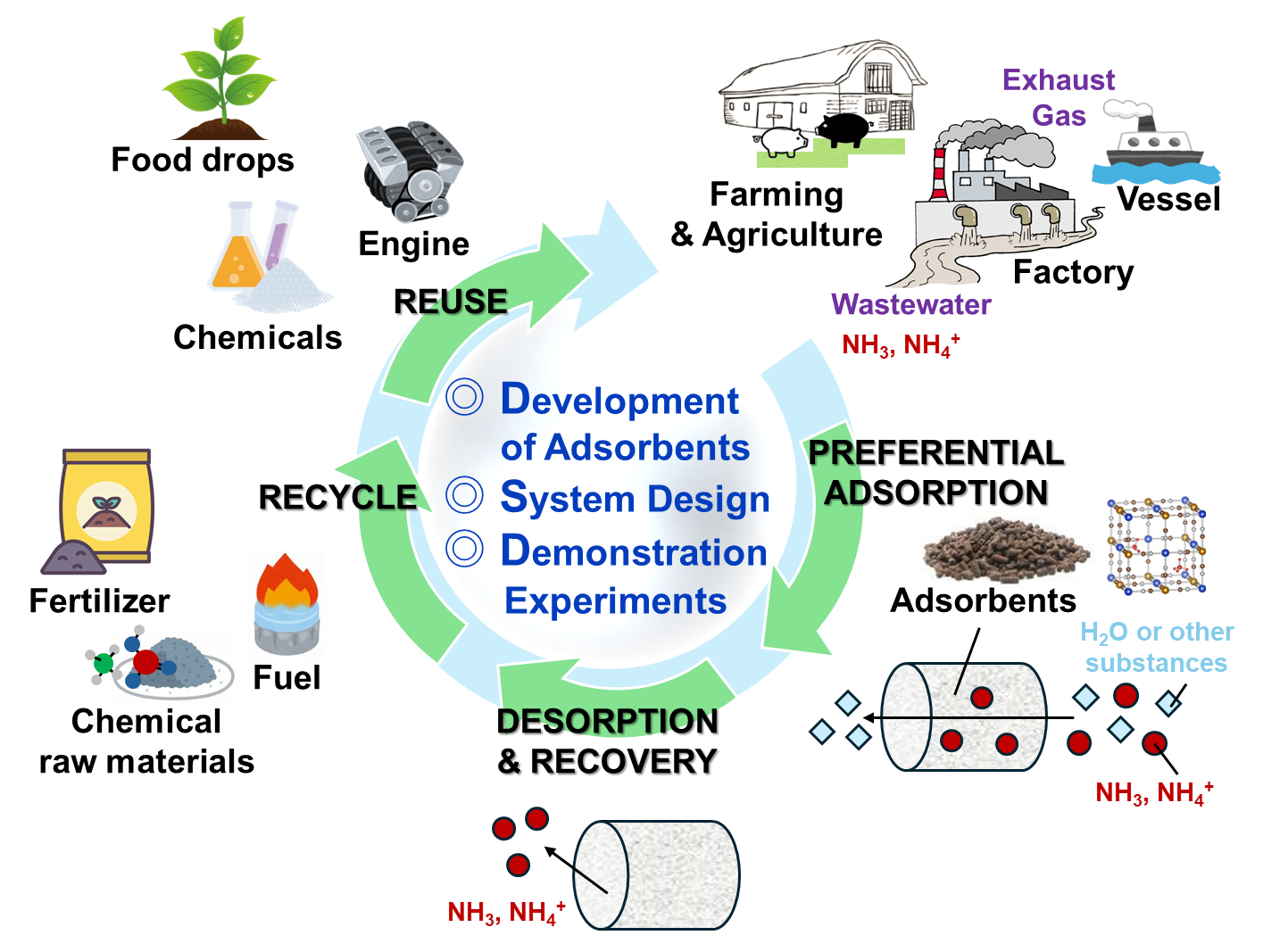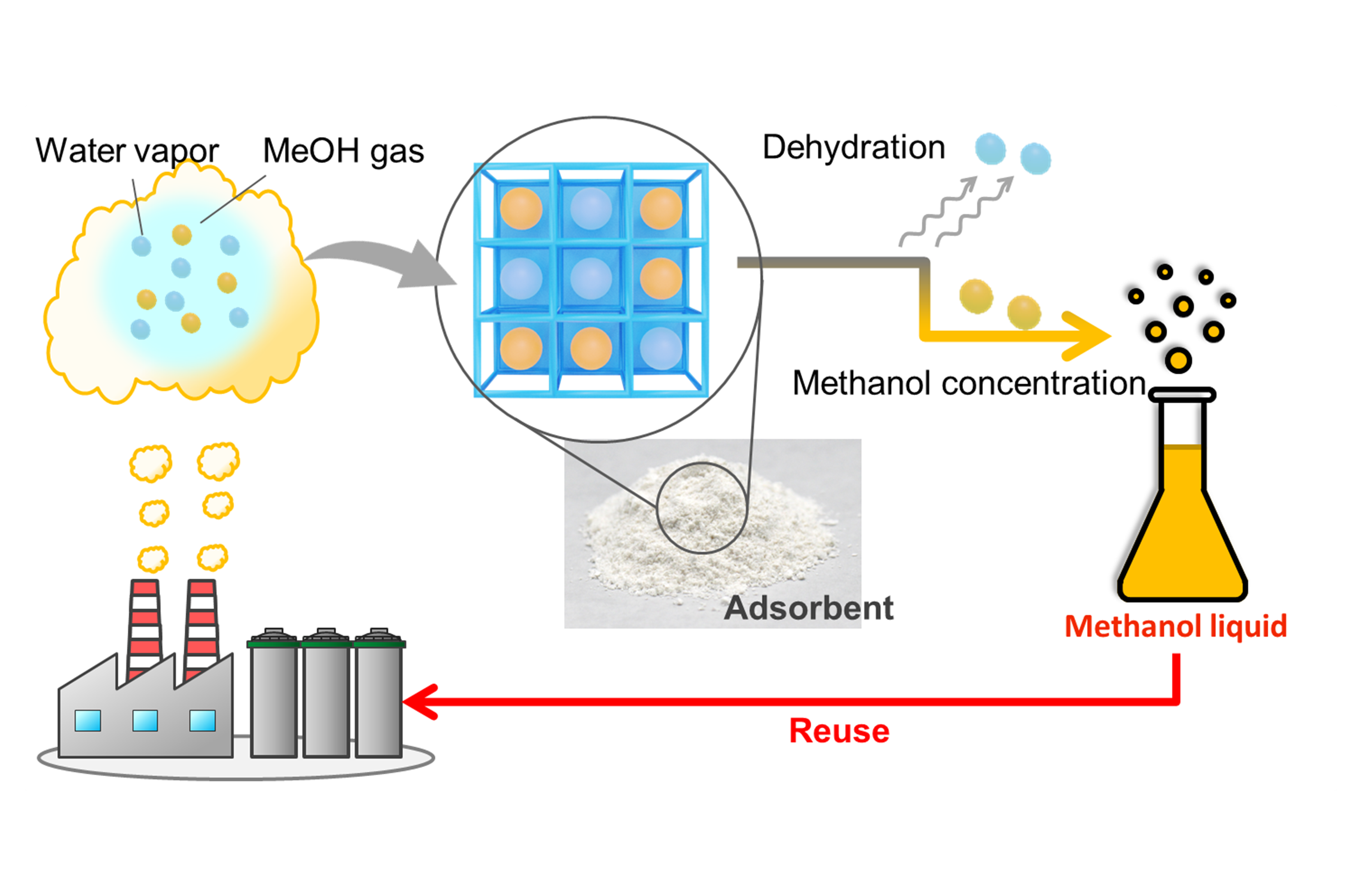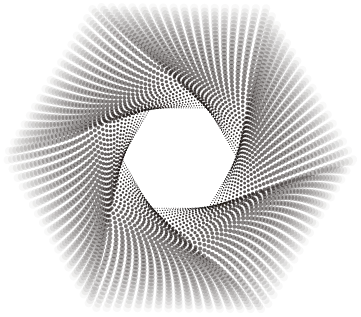Unit detailsResource Circulation Adsorption Research Group
Resource Circulation Adsorption Research Group
Solving social problems, such as environmental issues and resource circulation, through novel adsorption technology
We develop highly selective adsorbents with a large adsorption capacity, and conduct research and development focusing on the adsorption and removal of harmful substances from the environment or the recovery of useful substances for reuse as resources. In addition, aiming to promote practical applications, we conduct various demonstration tests.

Research Theme
Development of technology for recycling ammonia
Nitrogen, an important component of the Earth’s atmosphere, is fundamental to life. However, industrial and household activities produce exhaust gases and wastewater contaminated with toxic nitrogen compounds. These pollutants cause environmental crises, such as eutrophication, and comprise a threat to ecosystems worldwide. To address this problem, we have developed an innovative adsorbent that selectively and efficiently traps toxic ammonia. Besides developing ammonia adsorbents, we aim to recover and recycle ammonia, thereby completely removing it from the environment and protecting the future of the Earth.

Development of technology for perfluoroalkyl and polyfluoroalkyl substance (PFAS) removal using vesicles
PFAS contamination has been reported in various parts of the country, necessitating the urgent development of methods for its removal. Therefore, our group is investigating the adsorption of linear PFASs, which have been correlated with health problems, using vesicles (liposomes, see upper right in the picture) comprising amphiphilic molecules. Vesicles have been selected for analyses because PFAS molecules are expected to undergo strong attractive interactions with surrounding amphiphiles in the vesicles. We aim to develop an adsorbent for efficient PFAS removal that can be incorporated into water treatment plants.

Below: Recovery of vesicles after PFAS adsorption.
Development of technology for methanol recovery
Alcohols are used in various industries; therefore, efficient methods for their recovery and reuse are constantly in demand. Moreover, manufacturing “green” alcohol from CO₂ is promising strategy that could benefit the environment. However, as this process generates water as a byproduct, a significant amount of energy is required to separate the alcohol from water. We aim to develop a unique material that can easily separate alcohol from water using minimal energy. This material will be designed to promote “green” alcohol production and alcohol recovery from emissions and wastewater. Our research aims to support sustainable alcohol production and contribute toward a circular economy using automated equipment to accelerate material development.

Group Members
Group Members
-
Leader, Group
Hisashi TANAKA
-
Senior Researcher
Kimitaka MINAMI
-
Senior Researcher
Akira TAKAHASHI
-
Senior Researcher
Durga PARAJULI
-
Senior Researcher
Hatsuho USUDA
-
Researcher
Yuta SHUDO
-
Researcher
Masakuni YAMAGUCHI
-
Researcher
Hitomi OHMAGARI
-
Attached to the Research Division
Principal ResearcherTohru KAWAMOTO
-
Invited Senior Researcher
Takayoshi TANABE



